Outdoor bath inspo: Why an outdoor bath can be an affordable, quieter alternative to a spa
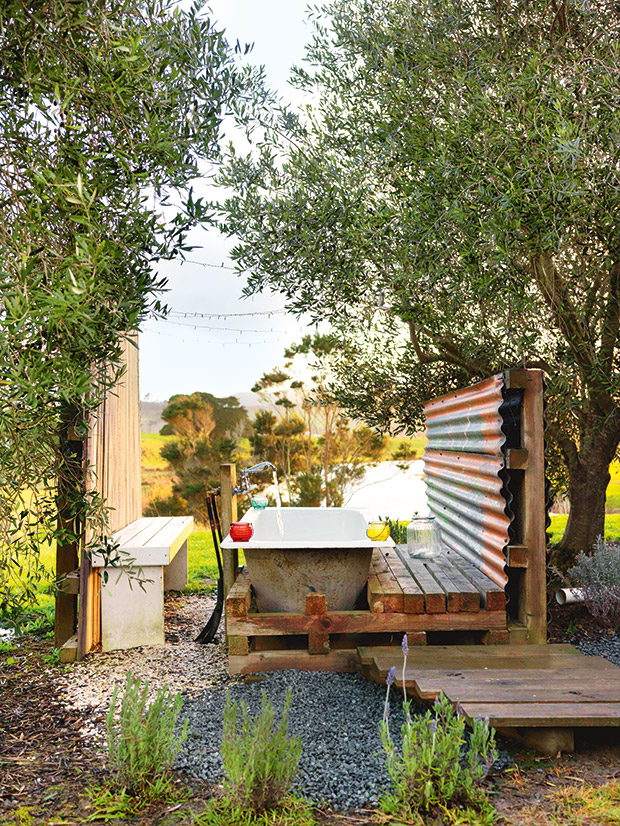
Photo: Jane Ussher.
If a bath beneath a starry, starry sky sounds like your kind of happy, you’re in excellent company.
Words: Jane Wrigglesworth
When movie star Jennifer Aniston wanted to admire a treasured acting award, she sat it on the edge of her stunning outdoor bath and showed it off on Instagram. Your budget may not stretch to a $15,000+ solid marble tub sitting in a Japanese-style zen courtyard like Jen’s, but you can still enjoy the experience.
An outdoor bath can be far more affordable than a spa. It’s also a different experience, say tub owners; much quieter (no bubbles or pumps), so you can enjoy the tranquility of nature more. Most bathtubs also look elegant; even when not in use, they can be a beautiful feature of a landscape. Plus, because they don’t hold water permanently, they don’t need fencing or ongoing maintenance.
THE COSTS
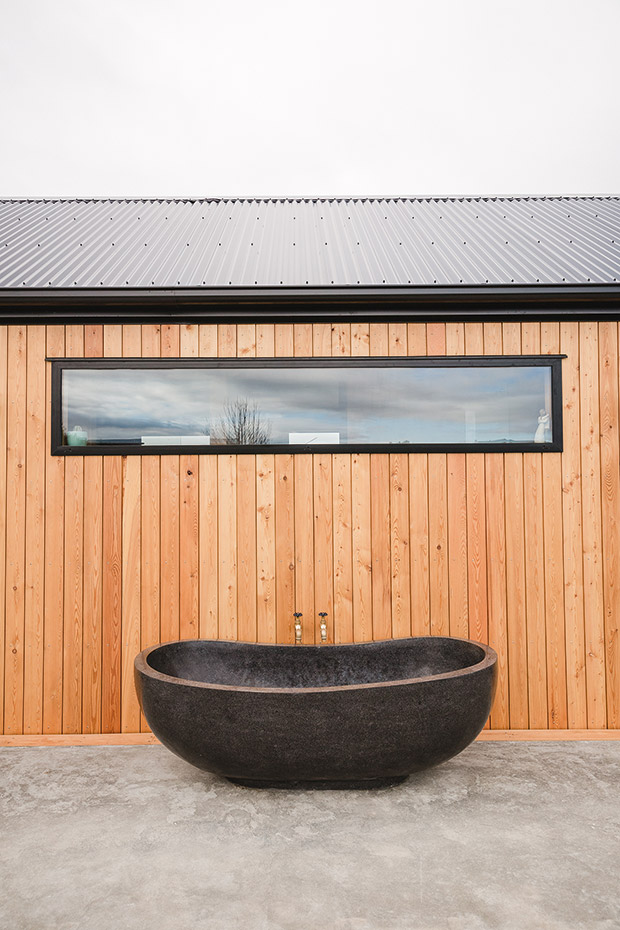
Photo: Heidi Horton.
How much will it cost to set up? Not much, if you keep it simple. The cheapest option is to take an old iron clawfoot bath and sit it on a flat, stable surface such as:
• old bricks;
• concrete pavers;
• concrete;
• a deck;
• hardwood planks.
You can fill it using a bucket or run a garden hose to it if you want a cold soak on a mid-summer’s day. If your bath is close to your home, you can fit a hosepipe to a laundry tap using an adapter (around $30 or so) and run hot water out to it.
You’ll pay more if you want hot water at the turn of a tap. You’ll need to hire a plumber to tap into hotwater lines through an exterior wall of your home.
7 things to consider when planning an outdoor bath
1. Position
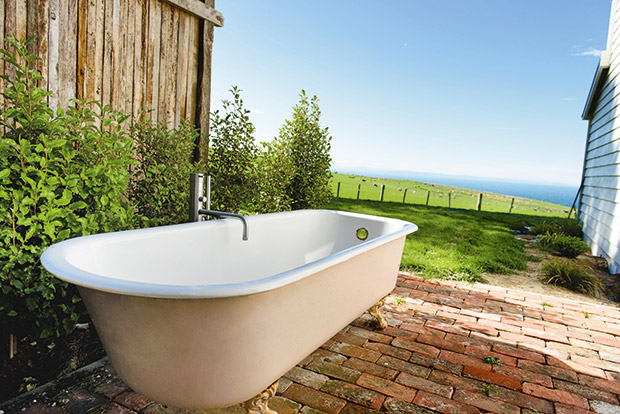
If you place your tub close to your house, you have the option of sourcing hot water from the house. Avoid areas near ponds or a dank part of your block as mosquitoes will make bathing very uncomfortable. Think about where used water will go once it leaves the tub – you want it to drain away from your house
and lawn.
2. Stability
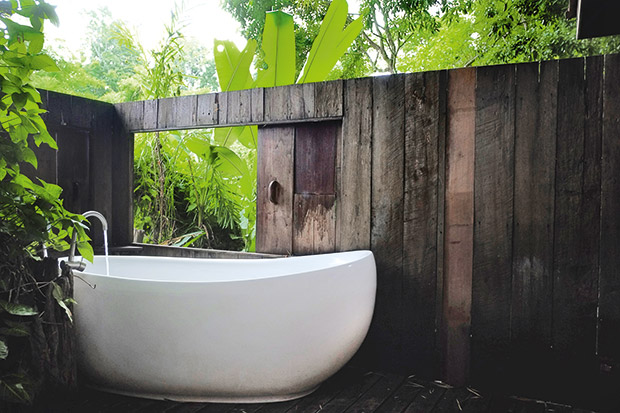
This tub sits on a reinforced deck to allow for the weight of the tub, water, and bather. If your budget doesn’t cover a fancy fence, one affordable idea is to use bamboo blinds that drop down for privacy when required.
Place the tub on a hard or reinforced surface, especially if using a clawfoot bath. A cast iron bath is exceptionally heavy (100-170kg, depending on the bath), plus water (1kg per litre, 270-500kg) and a person.
3. Drainage
If your bath is close to the house, lay a drain to direct water away from it. It could run down driplines to nearby trees or shrubs, drain into a soak pit, or into a temporary storage barrel so you can re-use it. If you’re going to use it regularly, it’s best to connect it to your wastewater system to prevent boggy soil. If the area is already boggy or has poor soil, talk to a drainage specialist.
Tip: avoid using strong bath products if you re-use the water or plants and soil microorganisms will suffer.
4. Privacy
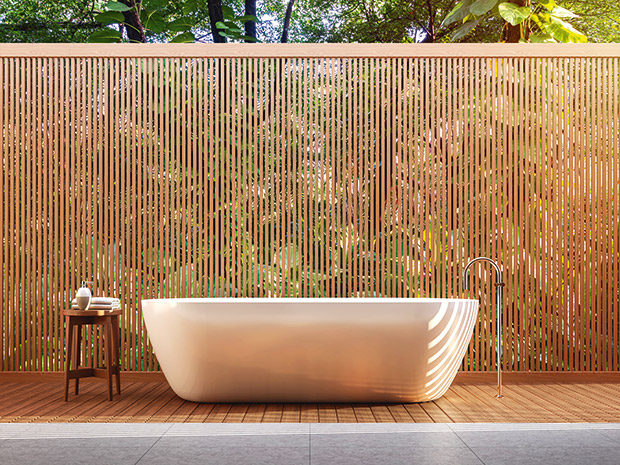
If your neighbours are close enough to see what you’re up to, either wear a swimsuit or erect some screens. There are endless options, including trellis, aluminium, wood or bamboo panels. You could plant a hedge, or place tall potted plants around it.
5. Scent
Add plants that perfume the air at night, such as angel’s trumpets (Brugmansia spp), tobacco plant (Nicotiana alata), and the lilac-white night-scented stock (Matthiola bicornis).
6. Shelter
You may enjoy a light rain while soaking outdoors, but if it’s bucketing down, it won’t be quite so pleasant. Options include:
• an awning;
• a pop-up or permanent gazebo;
• a shade sail.
Tip: a shower curtain strung over an arbour is an easy DIY option.
7. Accessories
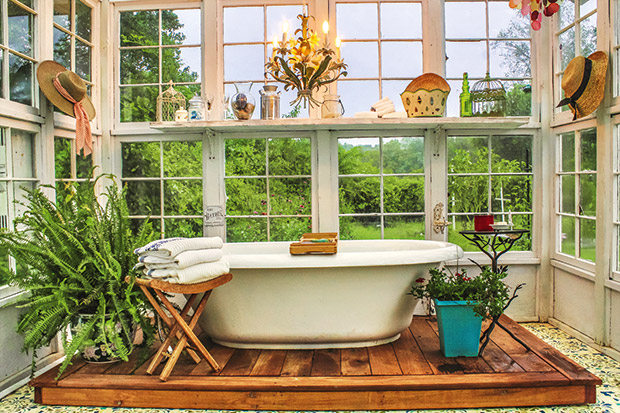
Have adequate shelving nearby for a book or drinks. Hooks are good for hanging towels. Options to prevent you from slipping when you get out of the water include:
• pebbles;
• a rubber mat;
• outdoor carpet;
• slip-proof coating.
How these two families did it

Who: Debra Bower
What: plastic top mount tub & hosepipe
Where: Hamilton
Some dogs aren’t fond of a bath, but Jaz likes this one. So does her mum, Debra. Debra explored various ways of piping hot water to her bath, including a califont (a gas-powered water heater). In the end she went for a simple, budget-friendly option, an inexpensive indoor tap adaptor from Mitre 10.
“The laundry is at the back of the house, and the outdoor bath is probably a good 20m away,” she says. “There’s no tap by the outdoor bath, so I run a hose from the laundry’s hot tap to the bath.
“You can also use sink tap click-ons,” says Debra. “You can connect either one to the tap or the water supply under the laundry.”
The window to the right is an old shower door. “The only thing that hasn’t worked well is the neighbours cutting down a tree that gave me privacy.”
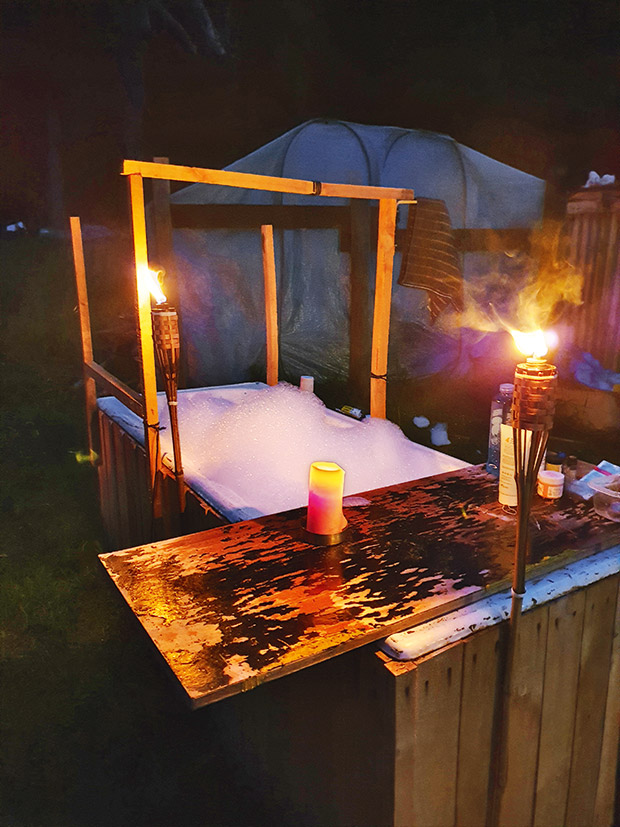
Who: Becky & Andy Coulsby
What: plastic top mount tub & fire-heated cylinder
Where: Havelock North
Their bath is too far from the house to use a hose, so Becky and Andy Coulsby use fire to heat water in a repurposed tank beside their outdoor bath.
“Hubby got an engineer at work to turn a cylinder into a water tank with legs for the fire underneath,” says Becky. “The cylinder is an old cool store compression tank with the top cut off.”
They put a firebox in a hole they dug underneath the tank. The water takes a couple of hours to heat but that doesn’t worry the couple. They bucket the water into the bath, a simple plastic insert model, sitting in a wooden frame.
“We absolutely love it!” says Becky. “Nothing beats a starry night with a couple of candles, some music and a wine.”

